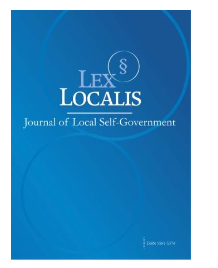WHEN CONTENT GOES VIRAL: ANALYZING THE STRUCTURE AND TRENDS OF VIRAL MARKETING RESEARCH IN THE DIGITAL AGE
DOI:
https://doi.org/10.52152/5f80jt36Keywords:
Viral marketing, bibliometric analysis, bibliographic coupling, co-word analysis, social media marketing, influencer marketing, eWOM.Abstract
This study examines the intellectual structure and future directions of viral marketing in the digital era through a bibliometric review of 4,629 Scopus-indexed articles collected on July 24, 2025. Using bibliographic coupling and co-word analysis via VOSviewer, this study identifies four major clusters shaping the current knowledge base: strategic communication and brand engagement through influencer authenticity, informational quality and cognitive processing of eWOM in consumer adoption, influence mechanisms and social identity in digital endorsement, and trust formation and reputation signals in peer-based interactions. Looking ahead, three strategic themes are highlighted: brand narrative and identity amplification, viral propagation models in digital commerce and social media, and influencer capital as a driver for digital persuasion. Theoretically, this study advances digital marketing scholarship by integrating consumer behavior, social influence, and technological factors into a comprehensive framework for viral marketing strategies. Its originality lies in linking intellectual landscapes with emerging trends, offering both academics and practitioners with evidence-based insights for theory development and strategy design. By mapping existing knowledge and forecasting future directions, this study contributes to the development of adaptive viral marketing practices aligned with technological innovation and evolving consumer dynamics.
Purpose
This study examines the existing knowledge framework surrounding viral marketing in the digital age and forecasts its future development. This study emphasizes the identification of trends, strategic themes, and research gaps, which can provide a foundation for creating more effective theories and practices in viral marketing.
Design/methodology/approach
This study adopts a bibliometric review approach that incorporates two primary techniques: bibliographic coupling, which maps the intellectual structure and current research trends, and co-word analysis, which aims to forecast future research directions. Data were gathered from the Scopus database on July 24, 2025, using relevant keywords, which identified 4,629 articles. The articles were subsequently analyzed using VOSviewer software.
Findings
The analysis identified four key clusters within the knowledge structure: (1) Strategic Communication and Brand Engagement through Influencer Authenticity, (2) Informational Quality and Cognitive Processing of electronic word-of-mouth (eWOM) in Consumer Adoption, (3) Influence Mechanisms and Social Identity in Digital Endorsement, and (4) Trust Formation and Reputation Signals in Peer-Based Digital Interactions. Additionally, the co-word analysis highlighted three strategic themes for the future: Brand Narrative and Identity Amplification through Viral Marketing, Viral Propagation Models in Interconnected Digital Commerce and Social Media Platforms, and Influencer Capital and the Power of Digital Persuasion.
Research Implication
This study theoretically enhances the digital marketing literature by presenting a conceptual framework that combines factors of digital consumer behavior, social influence, and digital technology within viral marketing strategies. The findings can serve as an academic reference for developing new theories that address the complexities of the digital marketing ecosystem, particularly in digital viral marketing.
Originality/Value
This study integrates bibliographic coupling and co-word analysis to develop a comprehensive map of viral marketing knowledge and forecast future research directions based on data. Its distinctiveness stems from the connection between the intellectual landscape and emerging trends in strategic keywords, providing both a conceptual framework for academics and an evidence-based guide for practitioners to follow. This approach is intended to support the design of research and the development of viral marketing strategies that can adapt to technological advancements and shifting consumer behaviors.
Downloads
Published
Issue
Section
License
Copyright (c) 2025 Lex localis - Journal of Local Self-Government

This work is licensed under a Creative Commons Attribution-NonCommercial-NoDerivatives 4.0 International License.








